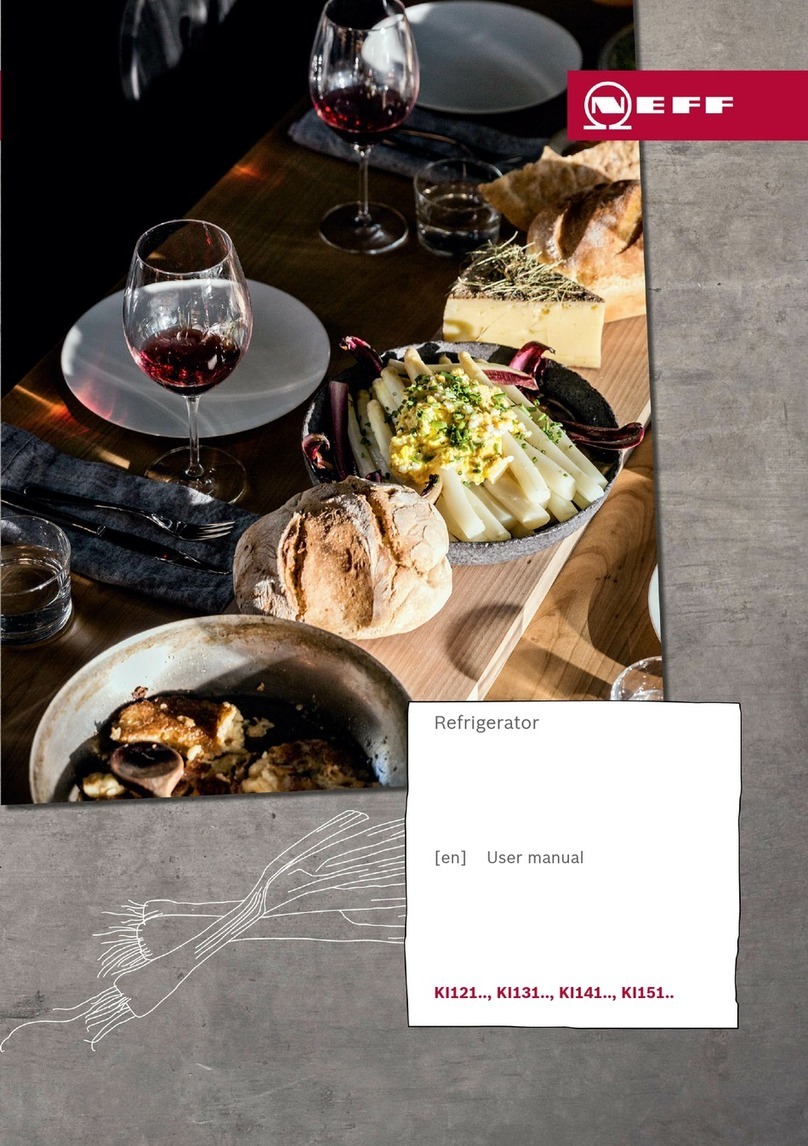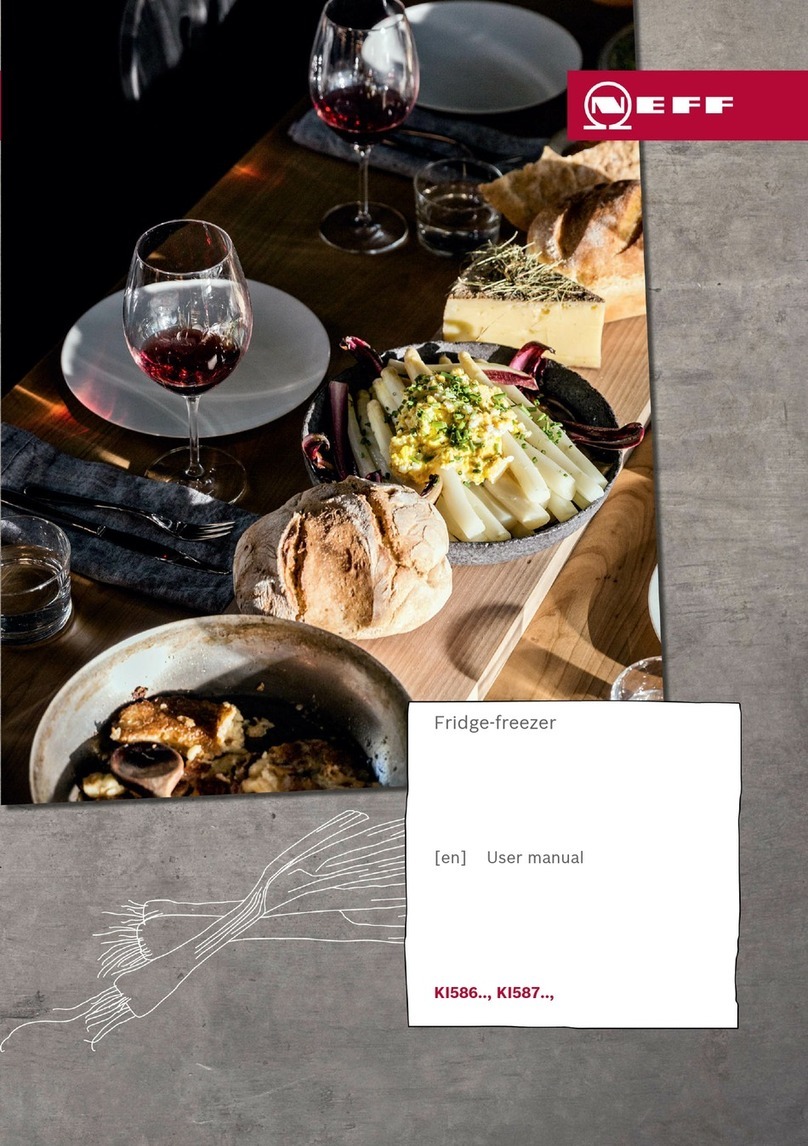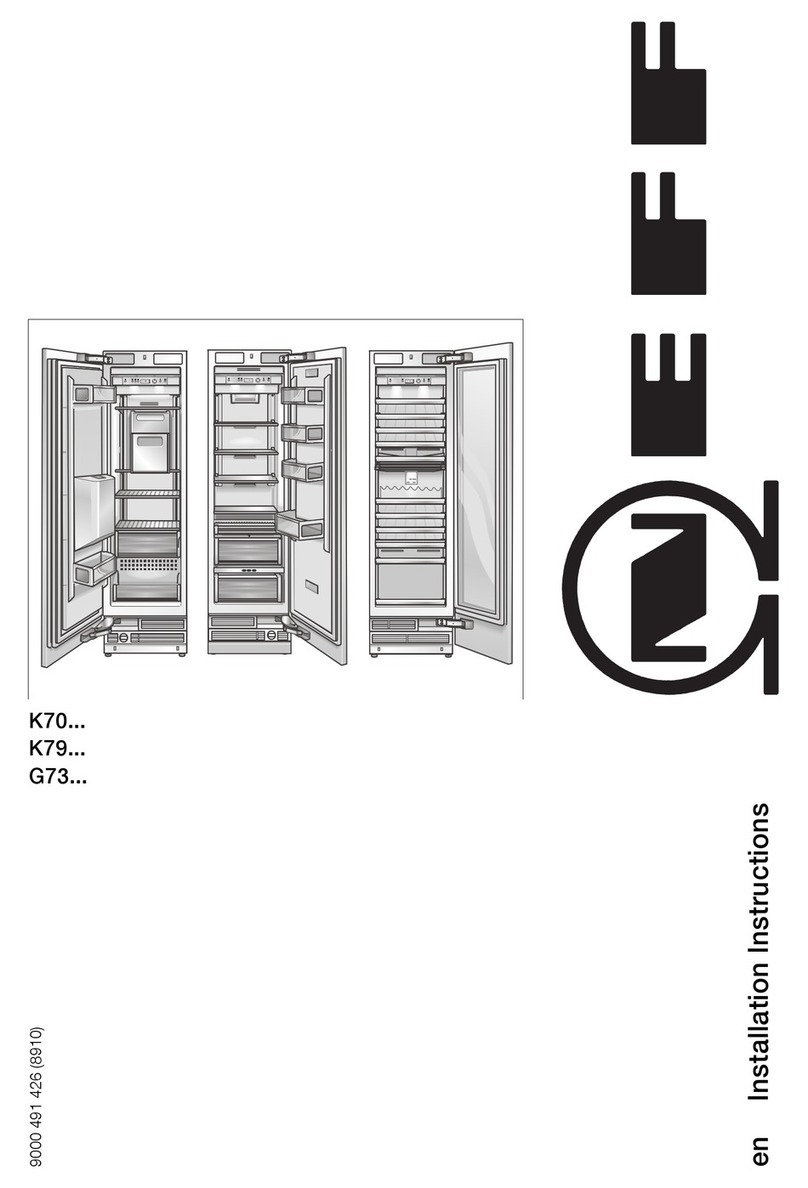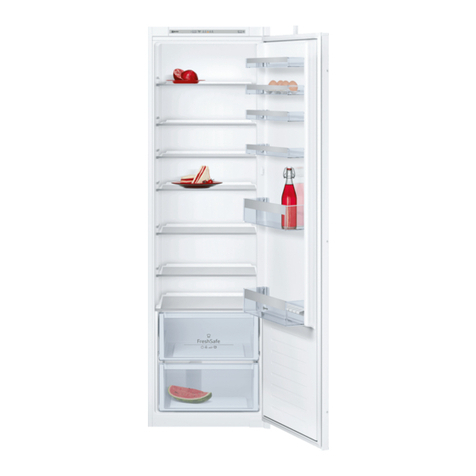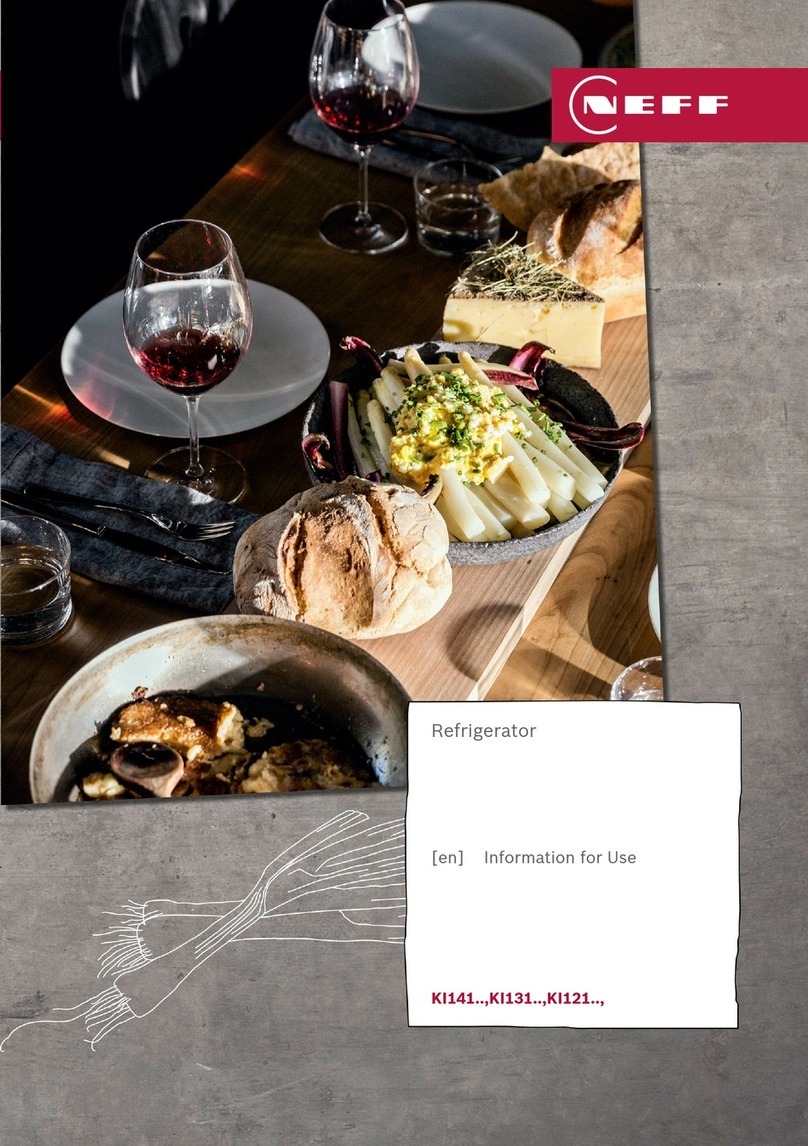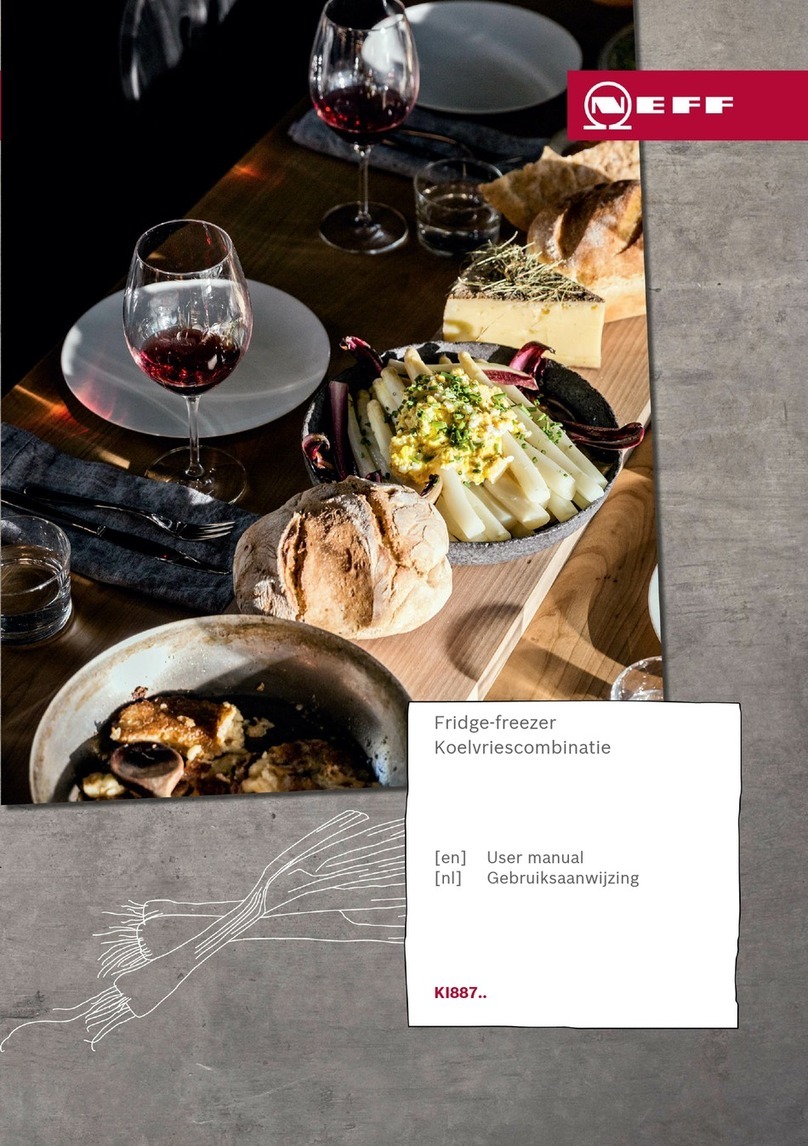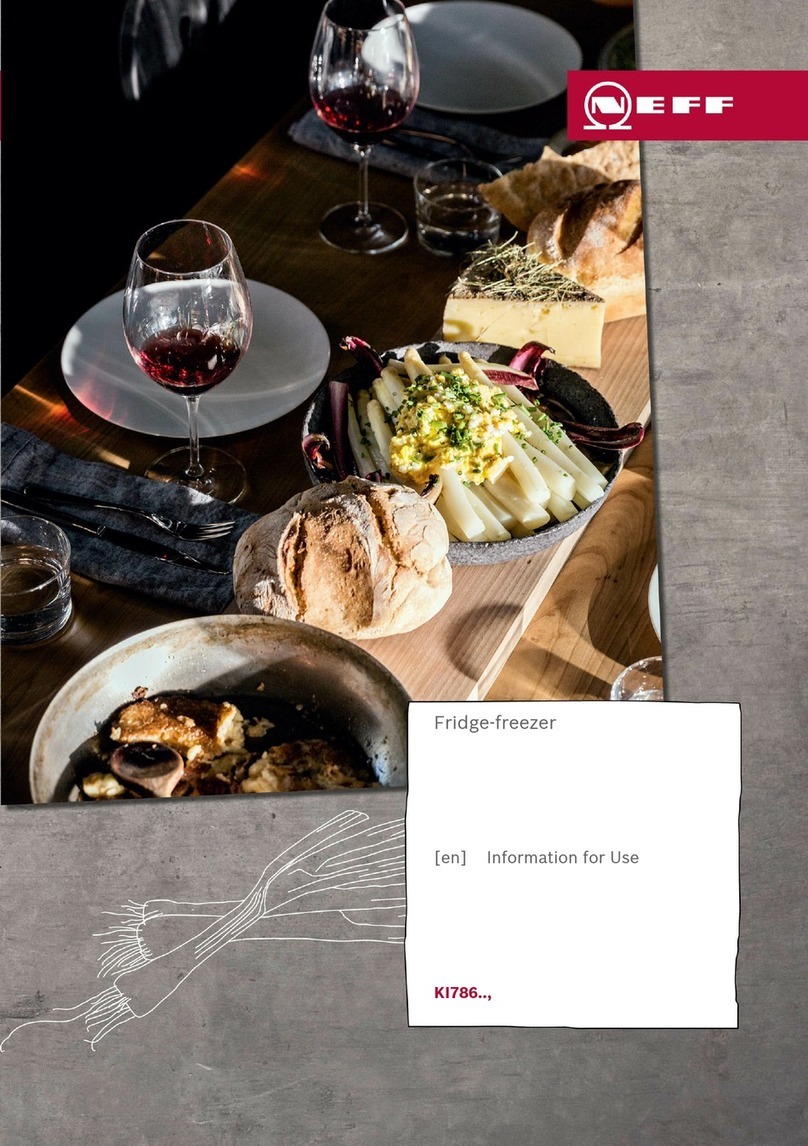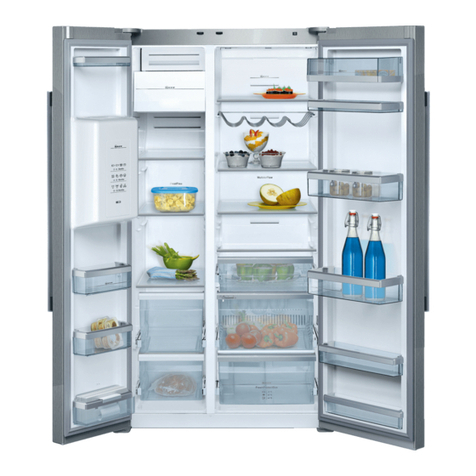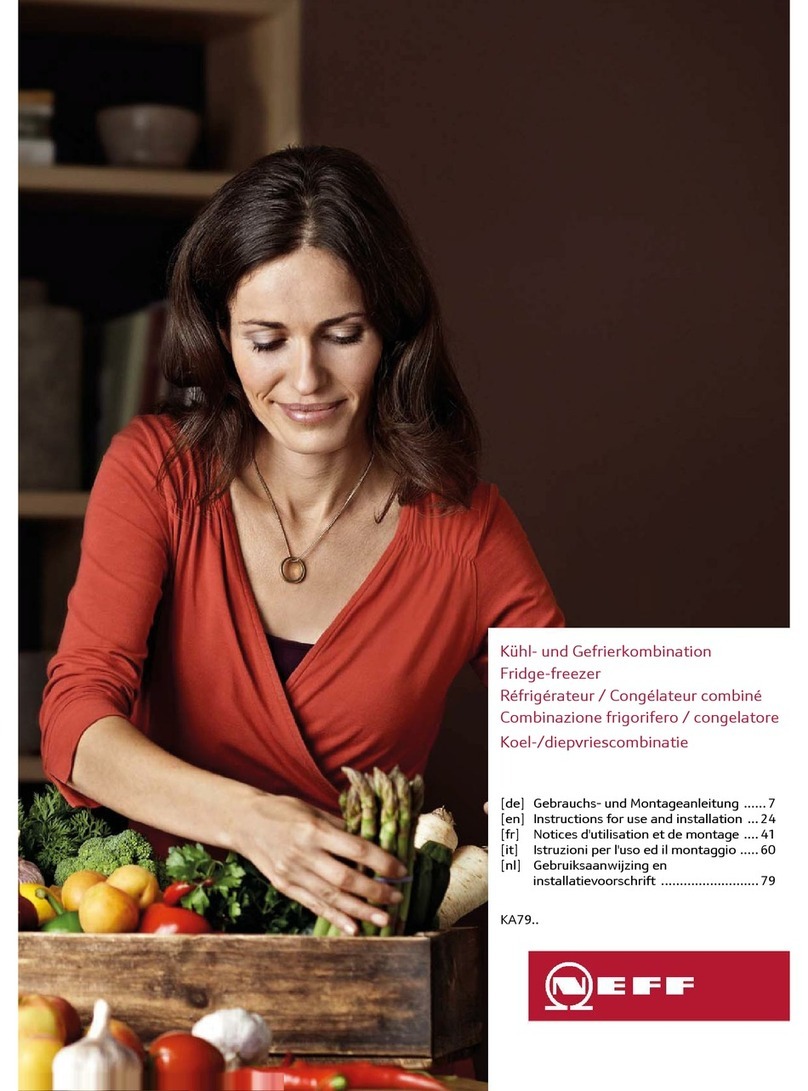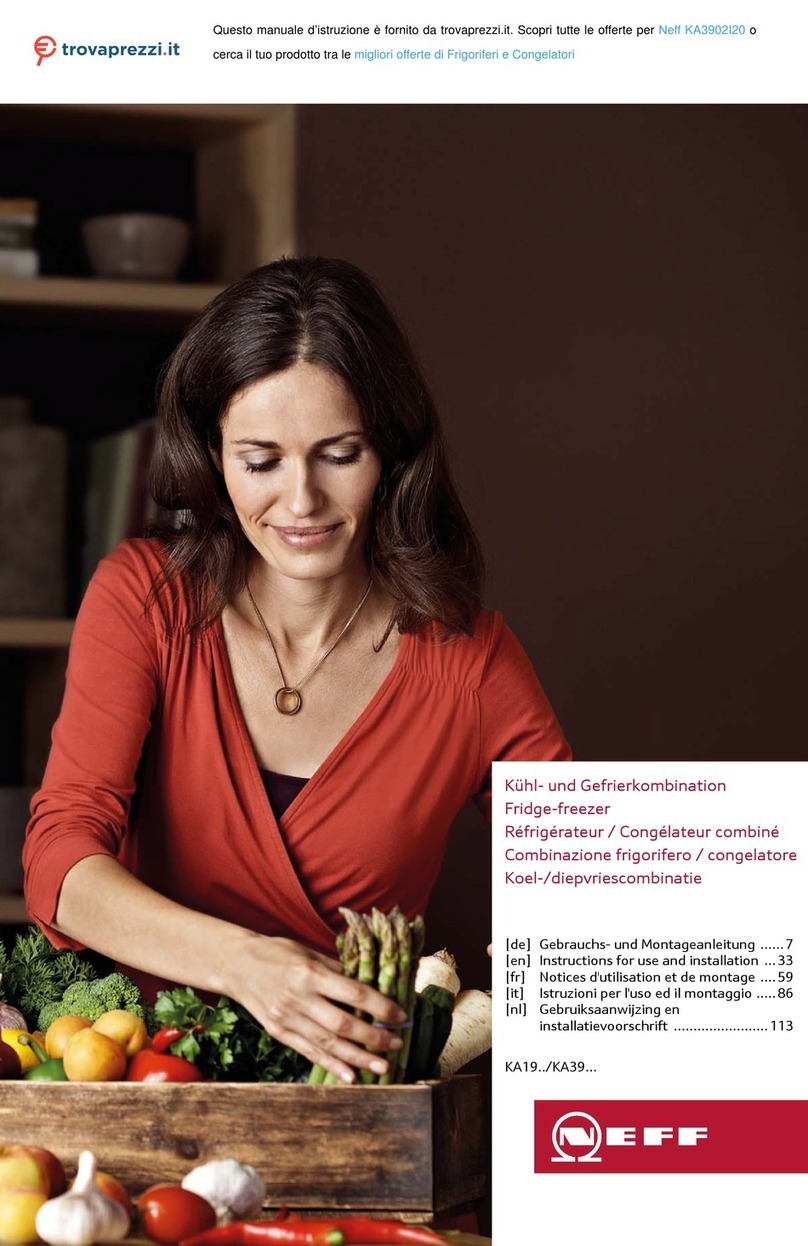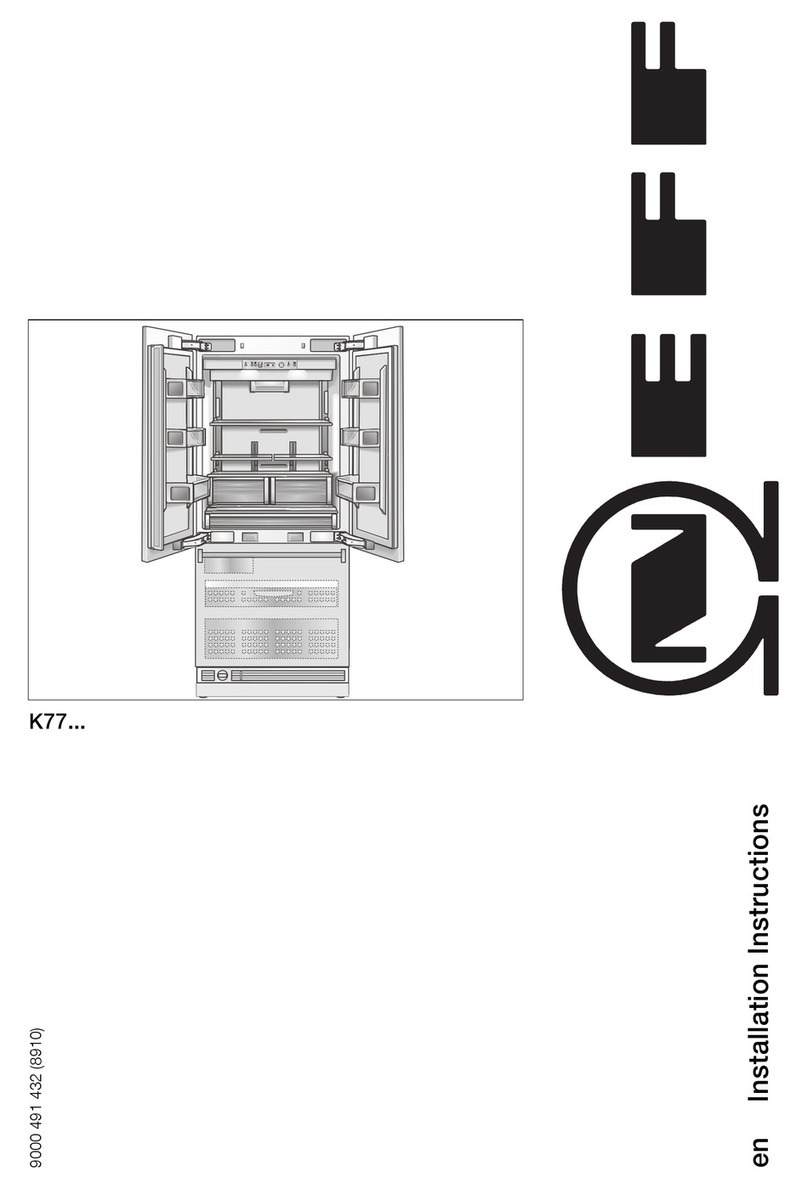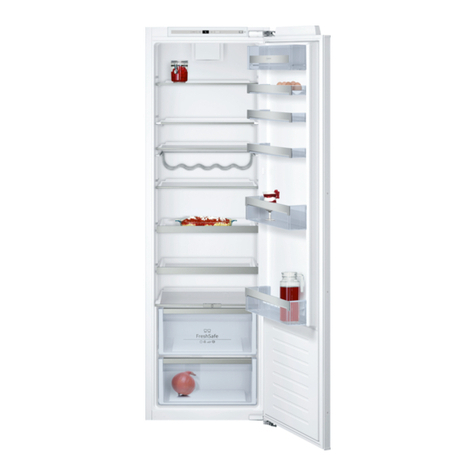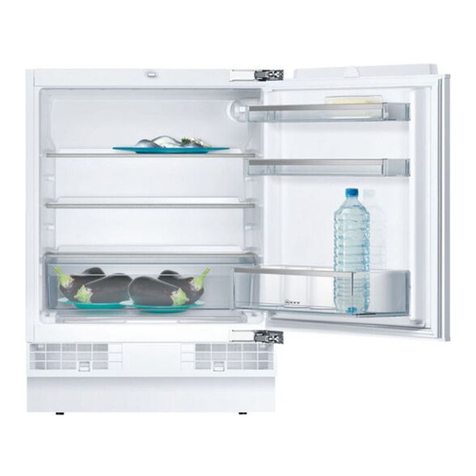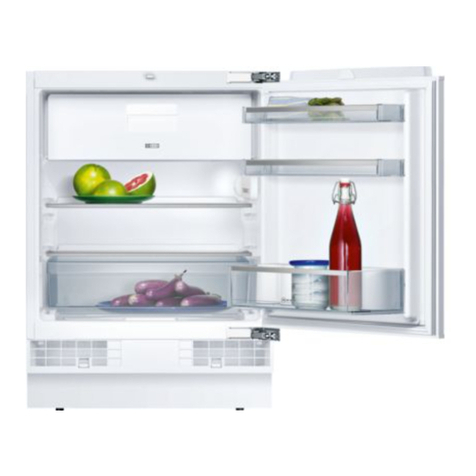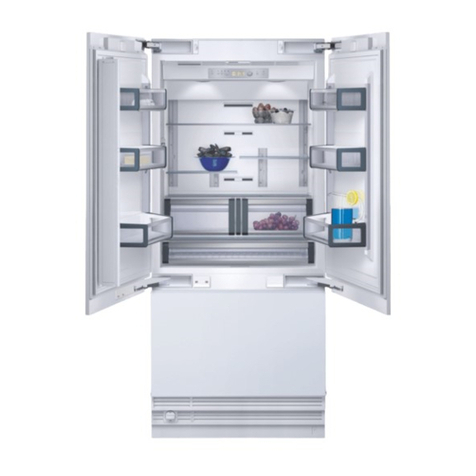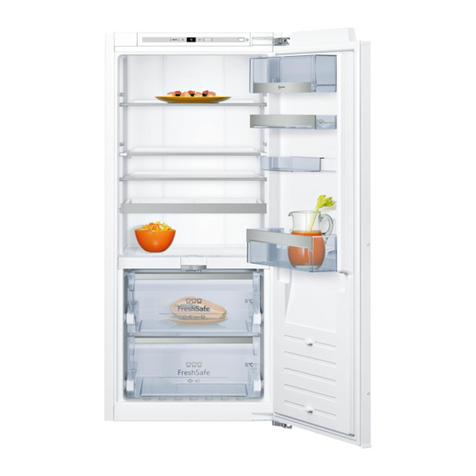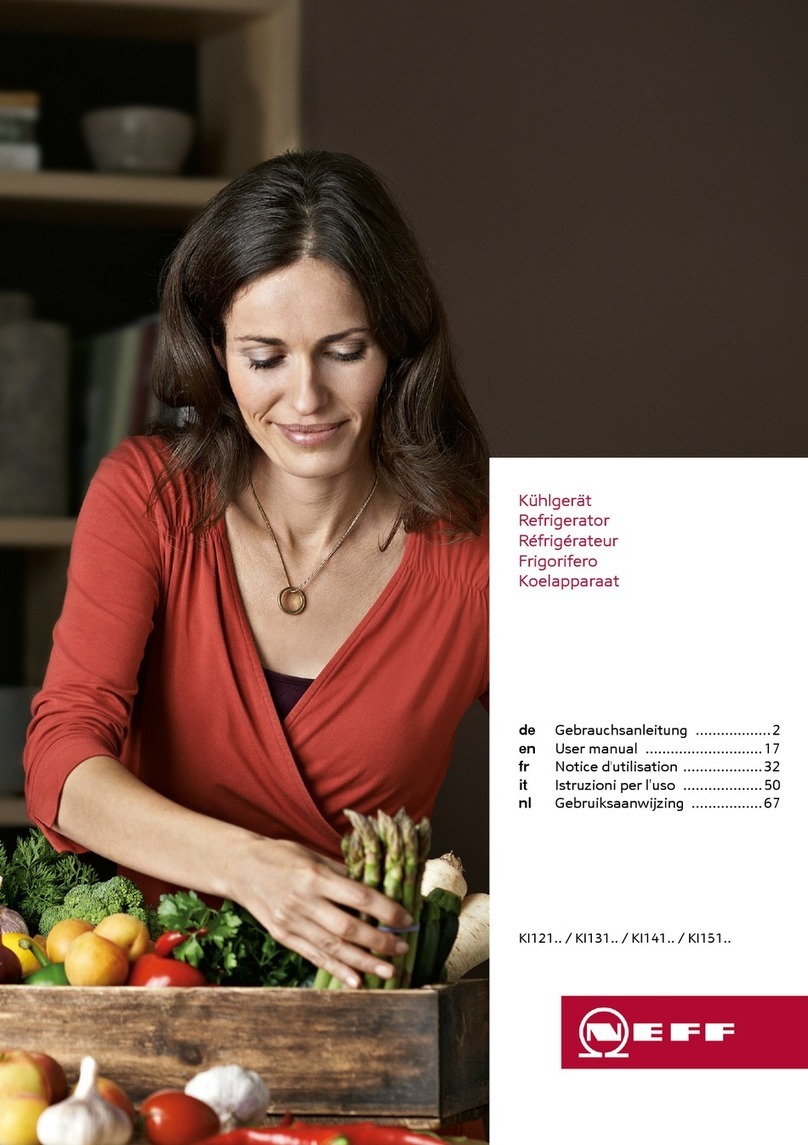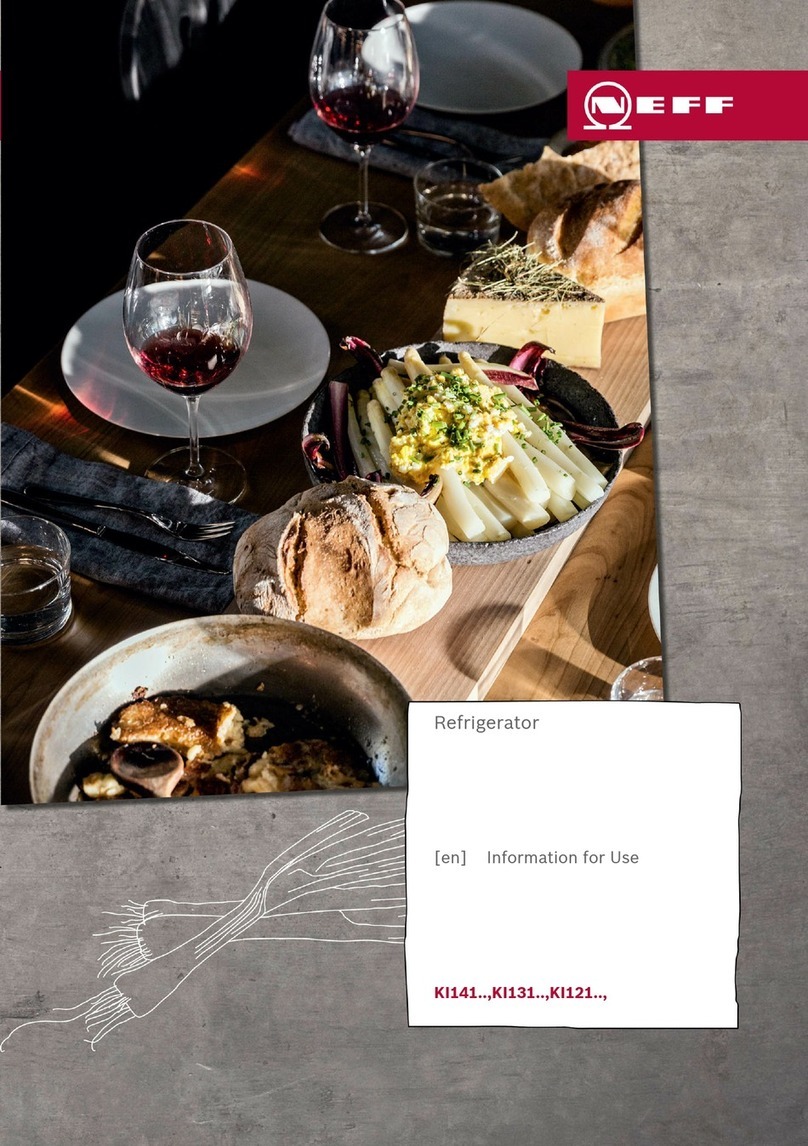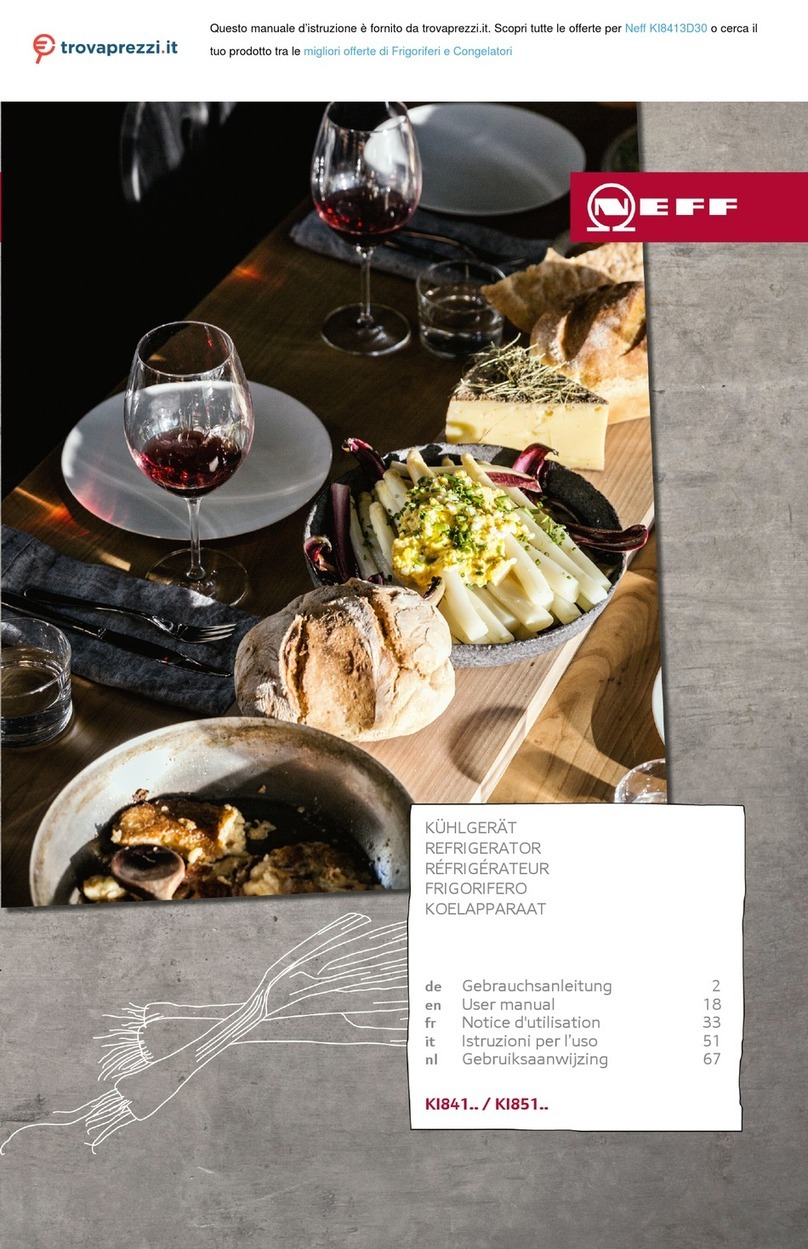en
4
Important information when
using the appliance
■Never use electrical appliances inside
the appliance (e.g. heater, electric ice
maker, etc.). Risk of explosion!
■Never use a steam cleaner to defrost
or clean the appliance! The steam
may penetrate electrical parts and
cause a short-circuit.
Risk of electric shock!
■Do not use pointed or sharp-edged
implements to remove frost or layers
of ice. You could damage the
refrigerant tubing. Leaking refrigerant
may ignite or cause eye injuries.
■Do not store products which contain
flammable propellants (e.g. spray
cans) or explosive substances in
the appliance. Risk of explosion!
■Do not stand or support yourself on
the base, drawers or doors, etc.
■Before defrosting and cleaning the
appliance, pull out the mains plug or
switch off the fuse. Do not pull out the
mains plug by tugging the cable.
■Bottles which contain a high
percentage of alcohol must be sealed
and stored in an upright position.
■Keep plastic parts and the door seal
free of oil and grease. Otherwise,
parts and door seal will become
porous.
■Never cover or block the ventilation
openings for the appliance.
■People (childern incl.) who have
limited physical, sensory or mental
abilities or inadequate knowledge
must not use this appliance unless
they are supervised or given
meticulous instructions.
Children in the household
■Keep children away from packaging
and its parts.
Danger of suffocation from folding
cartons and plastic film!
■Do not allow children to play with the
appliance!
■If the appliance features a lock:
keep the key out of the reach of
children!
General regulations
The appliance is suitable for refrigerating
food.
This appliance is intended for use in the
home and the home environment.
The appliance is suppressed according
to EU Directive 2004/108/EC.
The refrigeration circuit has been
checked for leaks.
This product complies with the relevant
safety regulations for electrical
appliances (EN 60335-2-24).

